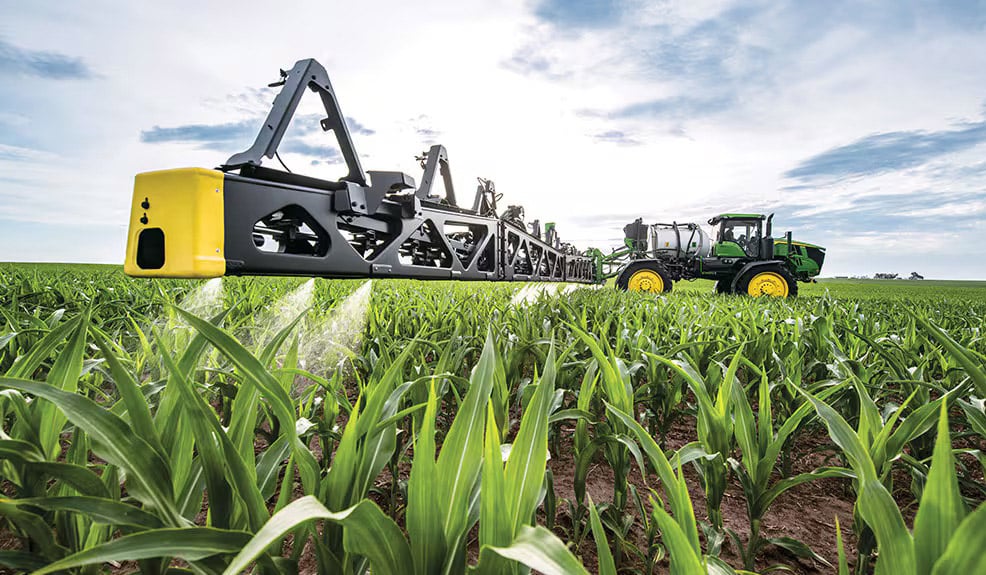Tillage: Assessing establishment rates in winter cereals
Now is an ideal time to walk crops to assess establishment rates in winter cereals and the effectiveness of weed control measures.
Following an excellent spell of autumn weather, most winter cereals were drilled in ideal conditions from the end of September through to mid-October.
According to Teagasc, establishment has generally been excellent across the country.
The favourable conditions also led to a notable increase in the use of pre-emergence herbicides this season, a very positive step for effective weed control, particularly in controlling troublesome grass weeds.
Tillage farmers continue to lead the way in the use of precision technology, particularly when it comes to drilling, according to Teagasc.
This has resulted in highly accurate bout widths and perfectly straight tramlines across the country.
Meanwhile, drill calibration has become much easier, and the inclusion of the thousand grain weight on seed bags from seed companies now allows farmers to fine-tune seeding rates with even greater accuracy.
Establishment rates
The final piece of the jigsaw is measuring the number of plants that have established. This provides valuable information for future seed rate calculations.
While an establishment rate of 85% is often assumed, it can vary significantly between fields and seasons. By calculating the actual establishment rate, farmers can make more accurate adjustments to drilling rates in the future.
While experienced farmers and agronomists can usually make a good visual assessment, taking actual counts gives more precise information on plant populations.
This information not only helps finetune future seed rates but also serves as a valuable management tool later in the crop’s development.
Measuring plant counts can be done in a few simple ways.
One common method is to use a quadrant, for example 0.1m², and multiply the number of plants counted by 10 to get plants per square metre.
Alternatively, a circular pipe with a circumference of 158cm gives an area of 0.2m²; in this case, multiply the count by five to calculate plants per square metre.
Another option is, using a ‘1m’ stick/tape, to count the number of plants in a row over 1m, then count how many rows fit into 1m across the drill width, and multiply the two numbers together to get plants per square metre.
Walking crops
Teagasc tillage specialist, Shay Phelan, has assessed the establishment rates achieved by recently planted winter cereal crops.
The process starts with a random selection of differing areas within a crop that reflect the germination rates that have been achieved.
Phelan explained: “It’s all about the plant count that has been achieved.
"This will give me information going forward in terms of how specific crops can best be managed.”
Where winter barley is concerned, the target number to be achieved is between 280-300 plants/m2, according to the adviser.
Plant count is also linked to seed rate. So an accurate assessment of plant counts that have been achieved in a specific field can be used as a barometer of future seed rates that can be applied.
Phelan said: “Plant counts can also be an indicator of seed drill efficiency.”
When determining a plant count, it is also important to carry out the exercise at an early stage of plant growth.
“Taking this approach ensures that individual plants can be easily seen,” the Teagasc representative confirmed.
“It also rules out the issue of tillers confusing the actual counting process.”
Germination rates can be impacted by a number of factors.
“Soil conditions are extremely important in this regard,” Phelan commented.
“As the autumn season progresses, the germination rates achieved by cereal crops generally falls.
“This reflects the generally deteriorating weather and ground conditions, which will come to the fore at that time of the year.”
He also outlined the potential impact of pests.
“Pest issues can also arise. Slugs and crows can take the seed. And, again, this will impact on establishment rates," he explained.
“There may also be issues linked to the inherent germination capacity of the seed."
Weed control
The increase in pre-emergence herbicide use in both winter wheat and winter barley this year has been facilitated by the good weather at drilling.
This trend also reflects a growing awareness of the threat posed by grass weeds in these crops. In some fields, slight phytotoxic (herbicide) effects are visible, typically as leaf whitening or bleaching.
This is normal and crops usually recover within a few days. The symptoms are most noticeable on overlaps and headlands.
For crops that have yet to receive a herbicide treatment, it is important to target pre- or early post-emergence applications as soon as possible.
Early control of weeds, especially grass weeds, is far more effective when weeds are small. Delaying control until the spring has led to increasing challenges in recent years, particularly with brome species and annual meadow grass.
Resistance to ALS chemistry has now been detected in some populations of annual meadow grass, underlining the need for timely and integrated weed management.







